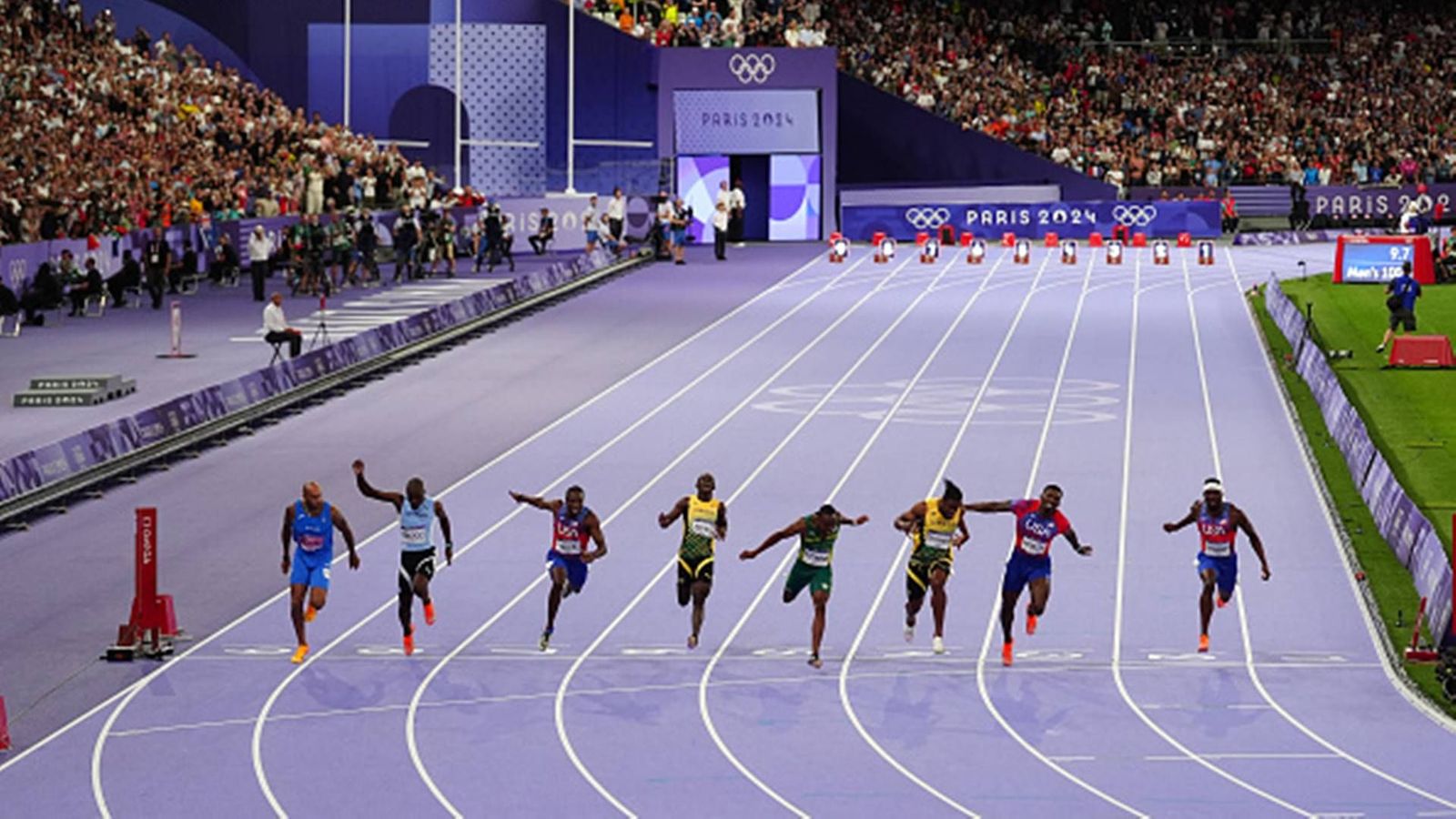It was as close as it could be. To the naked eye, it did not seem that USA's Noah Lyles finished first and won the gold medal in the 100m final at Paris Olympics 2024. However, after the photo finish on it was just five thousandths of a second that helped him clinch the gold ahead of Jamaica's Kishane Thompson.
Lyles and Thompson had a rounded-up time of 9.79 seconds but the former was ahead by a whisker. Even the spectators and athletes were left dumbfounded as Lyles’ name was no top. Many on social media felt that Thompson was done hard by but there is a valid explanation why he had to settle for a silver medal.
How the technology works
As per the World Athletics' rules, a "slit-video" system scans an ultra thin segment of a track aligned with the finish line. It scans 2,000 times per second and provides an unbroken image of each athlete crossing the line, in this case all eight athletes. Then, it coordinates it with the athletes’ timing. Also, there's a back-up camera installed on the other side of the field if one of the runners is blocked by another and the photo is unclear.
However, the flash timer is not 100 per cent accurate. The margin of error can be as worse as 0.01 or 0.02 seconds compared to the official time.
Why Thompson didn’t win gold
It is clear in the photo that Thompson's foot breached the finish line first. But for an official registration of timing, the torso (chest, abdomen, pelvis and the back) of the athlete has to cross the finish line.
Lyles was slowest in the historic race
In the final race, Lyles was the slowest of the eight runners at start. He made up for it later and beat Thompson by the barest of the margins.
This was the most competitive final in the Olympics history as all eight finalists were separated by very small margins.
MORE ON SPORTS TAK:


